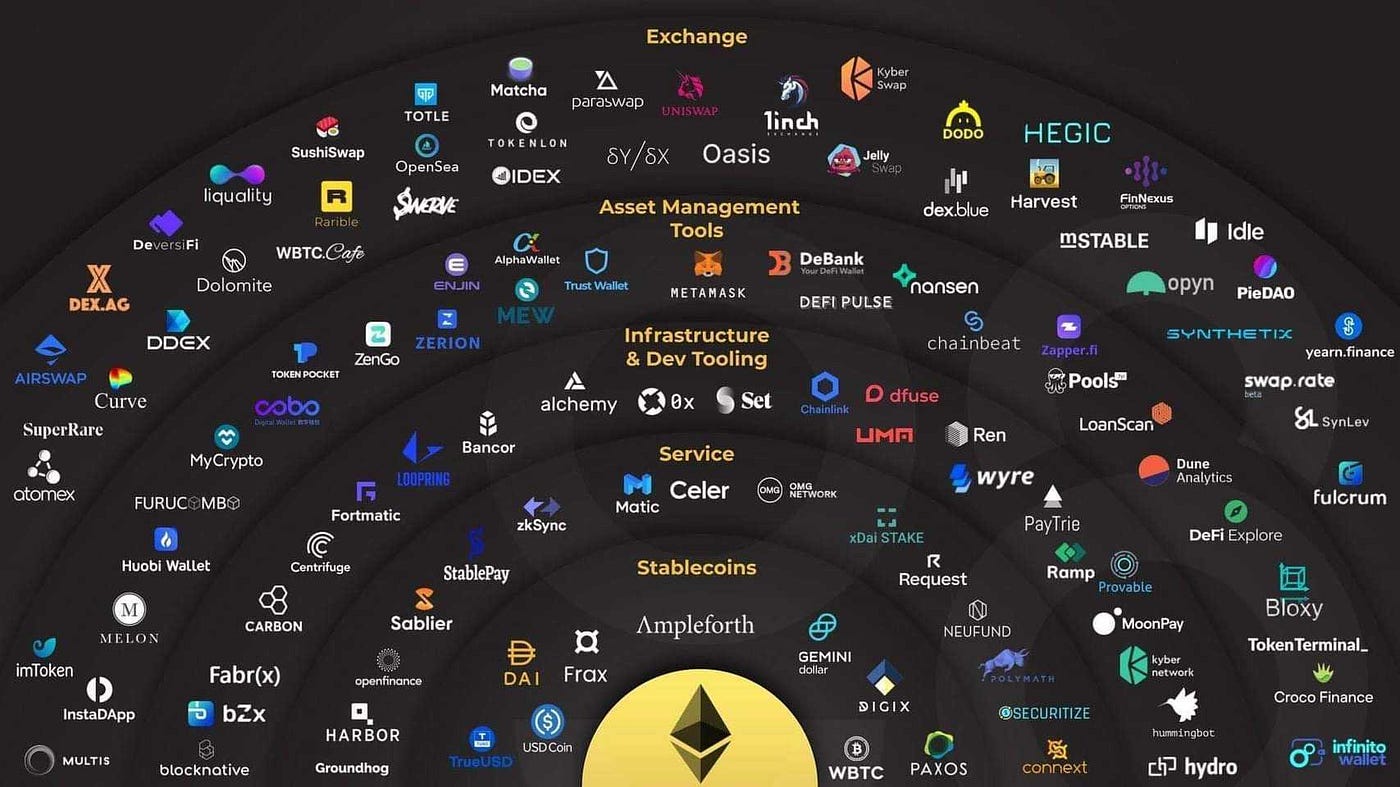How to Evaluate Token Ecosystems

- Understanding the key components of a token ecosystem
- Analyzing the utility and value proposition of tokens
- Assessing the token distribution and circulation
- Evaluating the governance and decision-making processes
- Examining the scalability and sustainability of the ecosystem
- Comparing different token ecosystems in the market
Understanding the key components of a token ecosystem
When evaluating a token ecosystem, it is crucial to understand the key components that make up the system. These components play a vital role in determining the overall success and sustainability of the ecosystem.
One of the key components of a token ecosystem is the token itself. The token is the digital asset that is used within the ecosystem for various purposes, such as transactions, voting rights, or access to services. It is essential to analyze the utility and value of the token to assess its potential for long-term growth and adoption.
Another important component of a token ecosystem is the underlying technology that powers it. This technology can vary, with some ecosystems built on blockchain technology, while others may use different types of distributed ledger technology. Understanding the technology behind the ecosystem is crucial for evaluating its security, scalability, and efficiency.
In addition to the token and technology, the community that supports the ecosystem is also a critical component. A strong and engaged community can help drive adoption, increase network effects, and contribute to the overall success of the ecosystem. Evaluating the size, activity, and diversity of the community can provide valuable insights into the ecosystem’s potential for growth.
Furthermore, the governance structure of the ecosystem is another key component to consider. Governance mechanisms help ensure that decisions are made transparently and fairly within the ecosystem. Evaluating the governance model can help assess the ecosystem’s ability to adapt to changing circumstances and address potential challenges.
Overall, understanding the key components of a token ecosystem is essential for evaluating its potential for success. By analyzing the token, technology, community, and governance structure, investors and stakeholders can make informed decisions about the ecosystem’s viability and long-term prospects.
Analyzing the utility and value proposition of tokens
One crucial aspect to consider when evaluating token ecosystems is analyzing the utility and value proposition of the tokens being offered. This involves assessing how the tokens can be used within the ecosystem and the benefits they provide to users.
Tokens with a clear utility and value proposition are more likely to attract users and investors, as they offer tangible benefits that can enhance the overall ecosystem. For example, tokens that provide access to exclusive services, discounts, or voting rights can create a strong incentive for individuals to participate in the ecosystem.
When analyzing the utility of tokens, it is essential to consider whether they serve a real purpose within the ecosystem. Tokens that are essential for accessing key features or services are likely to have a higher value proposition than those that are purely speculative in nature.
Additionally, evaluating the value proposition of tokens involves assessing their potential for growth and appreciation over time. Tokens that have a limited supply or are designed to increase in value as the ecosystem grows can be particularly attractive to investors.
Overall, understanding the utility and value proposition of tokens is essential for making informed decisions when evaluating token ecosystems. By carefully analyzing these factors, investors can identify tokens that have the potential to deliver long-term value and contribute to the success of the overall ecosystem.
Assessing the token distribution and circulation
When evaluating a token ecosystem, it is crucial to assess the distribution and circulation of tokens. This involves analyzing how tokens are allocated among various stakeholders, such as investors, developers, and the project team. It is important to ensure that the distribution is fair and transparent, with no single entity holding a disproportionate amount of tokens.
Furthermore, understanding the circulation of tokens is essential for determining the liquidity of the token. This includes examining how tokens are bought, sold, and traded on exchanges. A healthy circulation of tokens indicates a strong demand for the token, which can lead to price stability and growth in the long term.
By assessing the token distribution and circulation, investors can gain valuable insights into the overall health and sustainability of the token ecosystem. This information can help them make informed decisions about whether to invest in a particular project or token.
Evaluating the governance and decision-making processes
One crucial aspect to consider when evaluating token ecosystems is the governance and decision-making processes in place. This involves examining how decisions are made within the ecosystem, who has the authority to make these decisions, and how transparent and inclusive the process is.
**When assessing governance**, it is essential to look at the structure of the ecosystem’s governance model. This includes understanding the roles and responsibilities of key stakeholders, such as token holders, developers, and validators. Additionally, it is important to evaluate the mechanisms in place for proposing and implementing changes to the ecosystem, as well as how conflicts and disputes are resolved.
**Transparency** is another key factor to consider when evaluating governance. A transparent governance process ensures that decisions are made openly and that stakeholders have access to relevant information. This can help build trust within the ecosystem and ensure that decisions are made in the best interest of all participants.
**Inclusivity** is also critical when evaluating governance. An inclusive decision-making process allows for the participation of a diverse range of stakeholders, ensuring that different perspectives are taken into account. This can help prevent the concentration of power in the hands of a few and promote a more democratic governance structure.
Overall, evaluating the governance and decision-making processes of a token ecosystem is essential for understanding how decisions are made within the ecosystem and how power is distributed among stakeholders. By assessing the transparency, inclusivity, and effectiveness of the governance model, one can gain valuable insights into the overall health and sustainability of the ecosystem.
Examining the scalability and sustainability of the ecosystem
When evaluating token ecosystems, it is crucial to examine the scalability and sustainability of the ecosystem. Scalability refers to the ability of the ecosystem to handle growth and increased usage over time. A scalable ecosystem can adapt to changing demands and accommodate a larger number of users without compromising performance. Sustainability, on the other hand, focuses on the long-term viability and resilience of the ecosystem. A sustainable ecosystem can withstand market fluctuations and external challenges, ensuring its continued operation and relevance.
Assessing the scalability of a token ecosystem involves analyzing its underlying technology, network capacity, and transaction speed. A scalable ecosystem should be able to process a high volume of transactions quickly and efficiently, without experiencing delays or congestion. Additionally, the ecosystem should have the flexibility to accommodate future upgrades and improvements to meet the evolving needs of users.
On the other hand, evaluating the sustainability of a token ecosystem requires examining its governance structure, economic model, and community support. A sustainable ecosystem should have a transparent and decentralized governance system that allows for community input and decision-making. Furthermore, the economic model should incentivize participation and contribution, ensuring the continued growth and development of the ecosystem.
By carefully assessing the scalability and sustainability of a token ecosystem, investors and stakeholders can make informed decisions about its long-term potential and viability. A robust and resilient ecosystem is more likely to attract users and developers, driving adoption and growth over time. Ultimately, a scalable and sustainable ecosystem is essential for the success and longevity of any token project.
Comparing different token ecosystems in the market
When evaluating different token ecosystems in the market, it is essential to consider various factors that can impact their success and sustainability. One key aspect to compare is the utility of the tokens within each ecosystem. Some tokens may have a clear use case and provide tangible benefits to users, while others may lack utility or have limited functionality.
Another important factor to consider is the level of decentralization within the ecosystem. Tokens that are governed by a decentralized network of nodes are often considered more secure and resistant to censorship or manipulation. On the other hand, tokens that are controlled by a central authority may be more vulnerable to external influences.
Additionally, it is crucial to assess the level of community engagement and developer activity within each ecosystem. A vibrant and active community can help drive innovation, adoption, and growth, while a lack of engagement may signal underlying issues or challenges.
Furthermore, the overall market demand and liquidity of the tokens should be taken into account. Tokens with high demand and liquidity are more likely to maintain stable prices and attract new users and investors.
In conclusion, comparing different token ecosystems in the market requires a comprehensive analysis of their utility, decentralization, community engagement, and market demand. By carefully evaluating these factors, investors and users can make informed decisions about which ecosystems offer the most potential for long-term success and growth.




